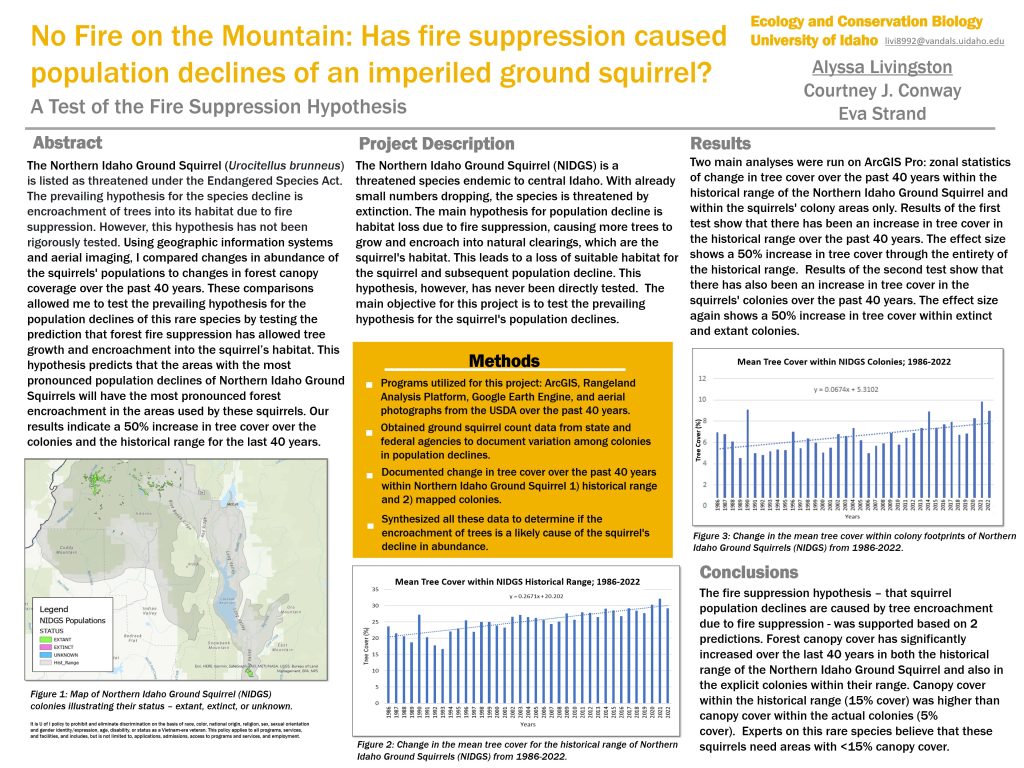
Fire Suppression and Northern Idaho Ground Squirrel (Urocitellus brunneus) Hypothesis Testing
By: Alyssa Livingston Email: livi8992@vandals.uidaho.edu
Home Town: Coeur d'Alene, ID High School: Coeur d'Alene High School
Major: Ecol & Cons Biol-Cons Biol Opt
Department: Natural Resources
College: College of Natural Resources
Abstract
The Northern Idaho Ground Squirrel (Urocitellus brunneus) is listed as threatened under the Endangered Species Act. The prevailing hypothesis for the species decline is encroachment of trees into its habitat due to fire suppression. However, this hypothesis has not been rigorously tested. Using geographic information systems and aerial imaging, I compared changes in abundance of the squirrels’ populations to changes in forest canopy coverage over the past 40 years. These comparisons allowed me to test the prevailing hypothesis for the population declines of this rare species by testing the prediction that forest fire suppression has allowed tree growth and encroachment into the squirrel’s habitat. This hypothesis predicts that the areas with the most pronounced population declines of Northern Idaho Ground Squirrels will have the most pronounced forest encroachment in the areas used by these squirrels. Our results indicate a 50% increase in tree cover over the colonies and the historical range for the last 40 years, supporting the fire suppression hypothesis.
Results and Conclusions
Results of zonal statistics run on the squirrels’ historical range show that there has been an increase in tree cover in the historical range over the past 40 years. The effect size shows a 50% increase in tree cover through the entirety of the historical range. Results of zonal statistics run on the squirrels’ colony area range show that there has also been an increase in tree cover in the squirrels’ colonies over the past 40 years. The effect size again shows a 50% increase in tree cover within extinct and extant colonies. The fire suppression hypothesis was supported based on 2 predictions. Forest canopy cover has significantly increased over the last 40 years in both the historical range of the Northern Idaho Ground Squirrel and also in the explicit colonies within their range. Canopy cover within the historical range (15% cover) was higher than canopy cover within the actual colonies (5% cover). Experts on this rare species believe that these squirrels need areas with <15% canopy cover. The hypothesis is supported based on our results.


